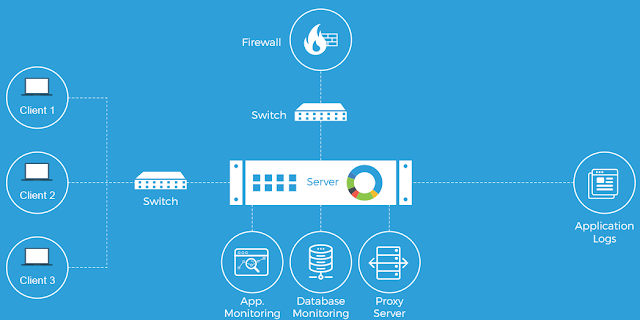The Impact of Network Performance Monitoring on IT Troubleshooting
Introduction
In today’s fast-paced digital world, network performance is the backbone of IT operations. A minor network glitch can lead to significant downtime, lost productivity, and frustrated users. This is where Network Performance Monitoring (NPM) comes into play. NPM tools continuously track, analyze, and optimize network performance to ensure smooth IT operations.
This article explores how NPM enhances IT troubleshooting, helping organizations prevent and resolve network issues efficiently.
Understanding Network Performance Monitoring
What is Network Performance Monitoring?
NPM is the process of measuring and analyzing network performance to detect and resolve issues. It ensures optimal data flow and identifies potential bottlenecks before they cause disruptions.
Key Components of NPM
Traffic Analysis – Monitoring bandwidth usage and data flow
Latency & Jitter Monitoring – Measuring delays in data transmission
Error Rate Detection – Identifying packet loss and retransmissions
Network Health Metrics – Tracking uptime, downtime, and performance trends
Types of Network Performance Monitoring Tools
Flow-based Monitoring (e.g., NetFlow, sFlow)
Packet-based Monitoring (Deep Packet Inspection)
Synthetic Monitoring (Simulated traffic for performance testing)
Role of NPM in IT Troubleshooting
Detecting Network Bottlenecks
NPM tools help IT teams pinpoint slow network segments, analyze bandwidth consumption, and detect high-latency connections.
Proactive Issue Resolution
With real-time monitoring, IT admins receive instant alerts, allowing them to resolve issues before they impact users. Predictive analytics further enhances problem prevention.
Key Features of Effective NPM Tools
Real-time Traffic Analysis – Identifying network anomalies immediately
Automated Alerts – Instant notifications for potential issues
AI & Machine Learning – Predictive insights for proactive troubleshooting
Log Monitoring & Analysis – Correlating network logs to detect security threats
Benefits of NPM in IT Troubleshooting
Faster Issue Resolution
NPM reduces troubleshooting time by providing instant visibility into network health.
Reduced Downtime
By identifying network issues early, businesses can minimize costly downtime.
Improved Security
NPM tools detect unusual traffic patterns that may indicate cyber threats.
Enhanced User Experience
A well-monitored network ensures seamless connectivity, boosting productivity.
Challenges in Network Performance Monitoring
Managing Large-Scale Networks – Complex architectures require scalable NPM solutions.
False Positives in Alerts – Too many alerts can overwhelm IT teams.
Security & Compliance – Ensuring data privacy while monitoring network traffic.
Choosing the Right NPM Solution
Factors to consider:
Scalability
Real-time monitoring capabilities
AI-driven analytics
Security compliance
Case Study: How NPM Helped a Business Improve IT Troubleshooting
A global enterprise faced frequent network outages, leading to downtime and lost revenue. After implementing Motadata’s NPM solution, they experienced:
30% reduction in downtime
50% faster issue resolution
Enhanced security with real-time anomaly detection
Future of Network Performance Monitoring
AI-Driven NPM – Advanced machine learning models predict network failures.
Cloud-Based Monitoring – Enhanced scalability and flexibility.
Integration with ITSM – Streamlined IT operations and improved incident management.
Conclusion
Network Performance Monitoring plays a crucial role in IT troubleshooting, ensuring efficient issue detection and resolution. With advancements in AI and automation, the future of NPM looks promising, offering businesses enhanced network reliability and security.



Comments
Post a Comment